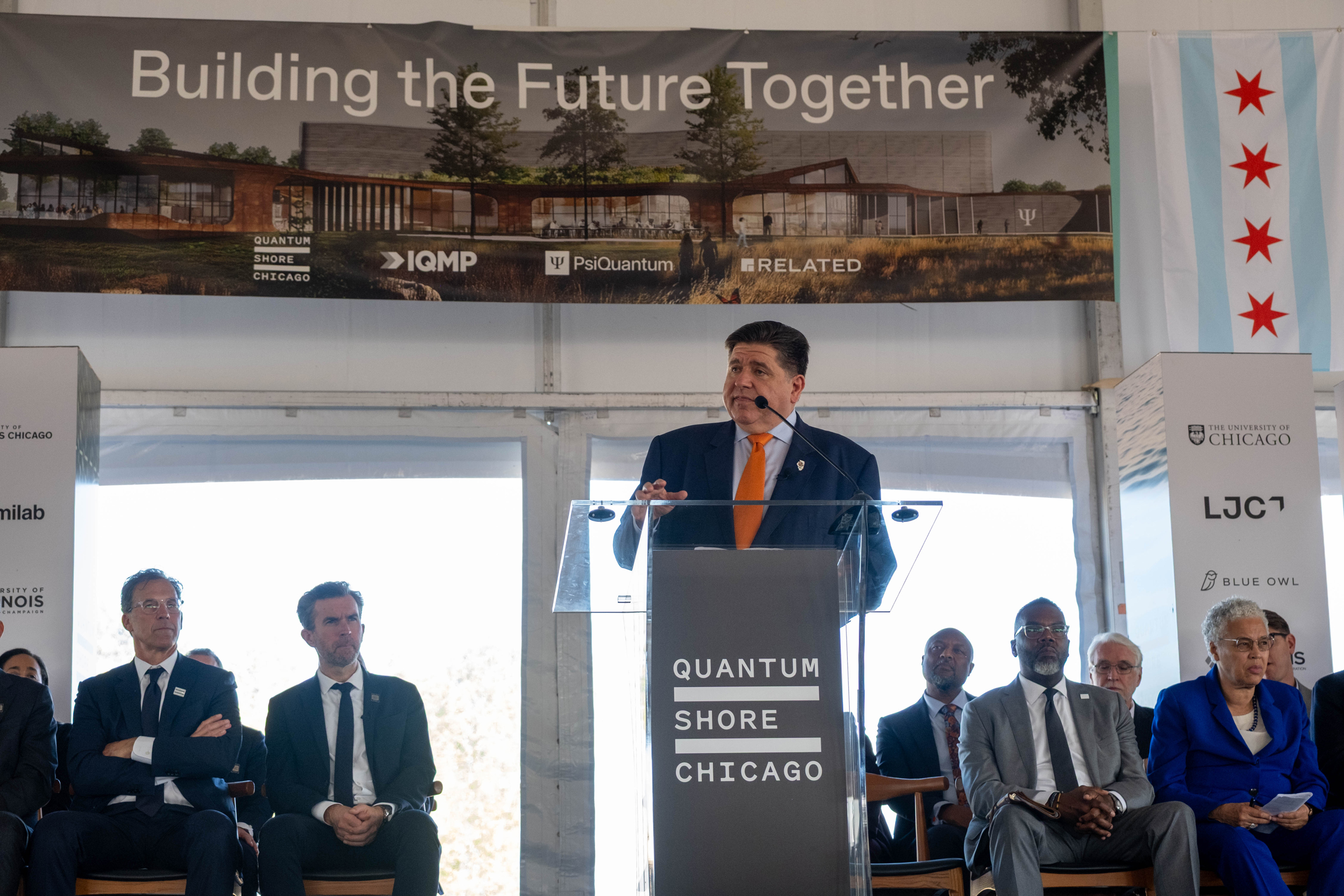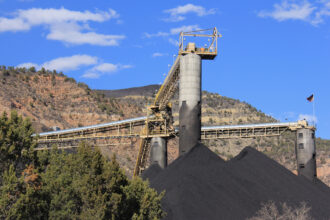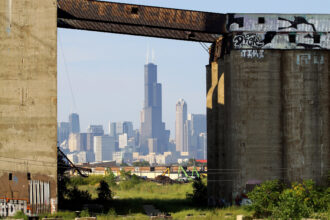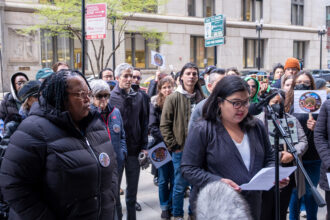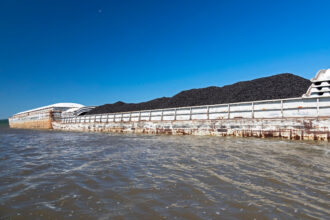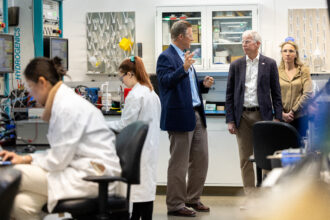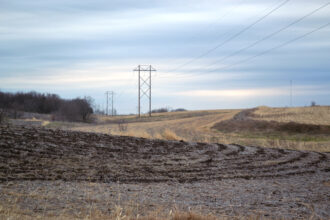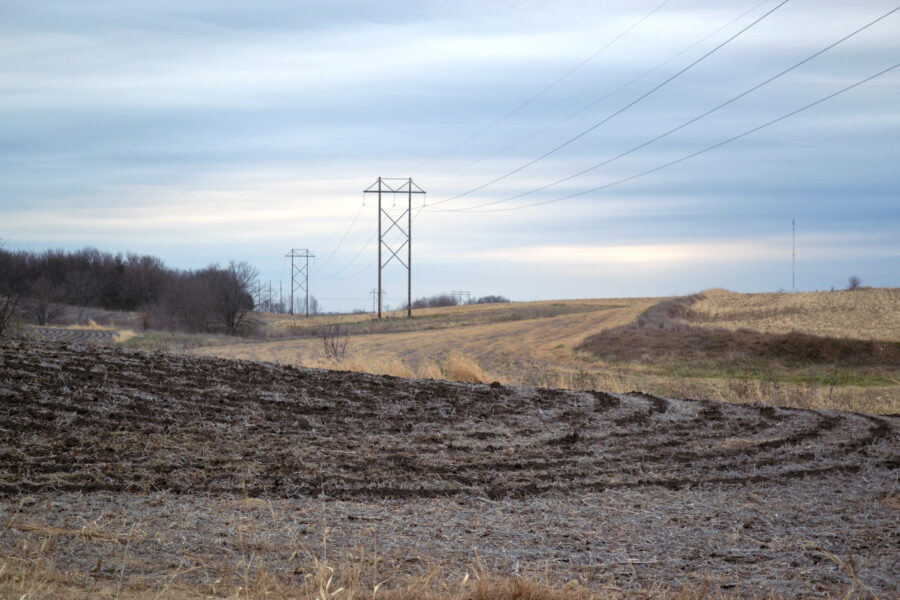CHICAGO—A Silicon Valley startup broke ground Tuesday afternoon at a former steelworks site on the Southeast Side for what is planned as the nation’s first large-scale quantum computing facility.
The company—called PsiQuantum—will be the anchor tenant for the Illinois Quantum and Microelectronics Park, a multi-million-dollar effort by lawmakers, universities and the private sector to make Chicago a hub for research in quantum computing: an emerging technology that aims to use quantum mechanics to solve complex problems quickly. The park will be located on a former U.S. Steel site that has been vacant for three decades in a majority Black and Latino neighborhood overburdened by environmental harms.
Quantum computing is an emerging field and computing projects are underway in New York City and Brisbane, Australia, the latter also a PsiQuantum venture. At the groundbreaking, Illinois Gov. JB Pritzker stood under a bright white tent and praised the project, emphasizing its ambitions for job creation, economic growth and research.
“Quantum has the potential to help solve some of humanity’s greatest challenges in national security, artificial intelligence, pharmaceuticals, energy, finance and beyond,” Pritzker said. “With every inch of progress, we bring ourselves just a little bit closer to the seismic advancements that can change everything.”
But some Southeast Side residents are pushing back, concerned the project could bring their neighborhoods further environmental contamination, higher energy bills and displacement, and they question whether new jobs from the facility will go to local residents. The project has faced skepticism and calls for greater transparency for months, with some people opposing it altogether while others call for developers to guarantee investing in environmental and affordability protections and job opportunities for the community.
A coalition of residents on Tuesday reiterated that they want the park’s developers to enter into a Community Benefits Agreement, a legally binding contract to ensure that existing neighborhood residents are not pushed out and that the business tenants will invest in the community.
“We are all concerned about our rising utilities, taxes and rents,” said Southeast Side resident and coalition member Radie Kilpatrick. “We have ideas that would help us stay in our homes. This is why we are looking forward to a CBA.
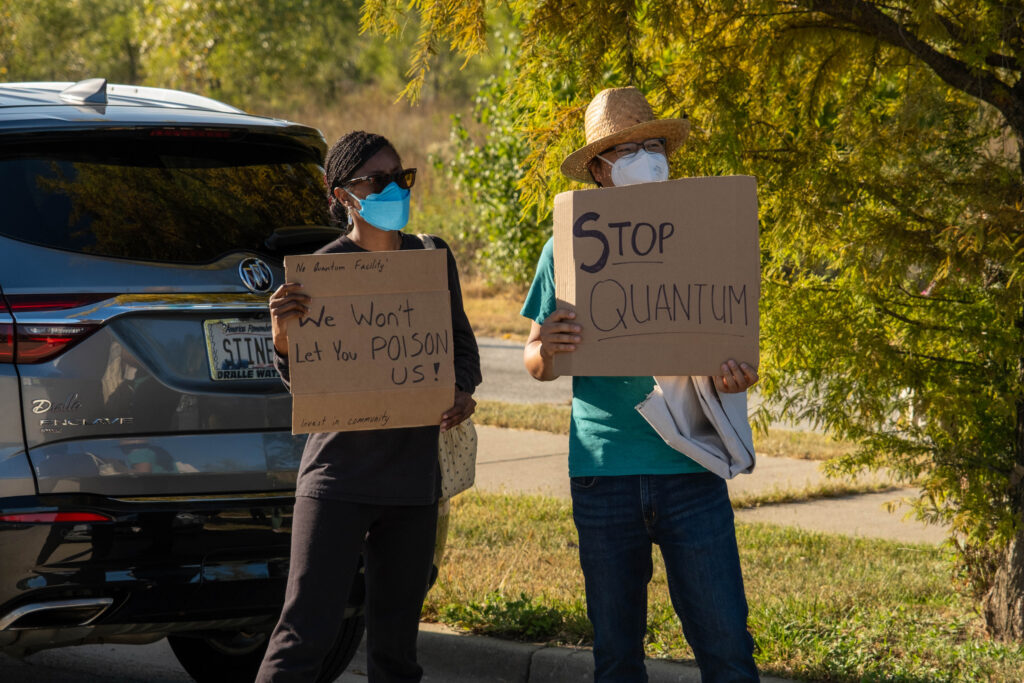
An Illinois Quantum and Microelectronics Park spokesperson said in a statement that the developers and partners have participated in dozens of community gatherings and are committed to workforce development. But the statement did not respond directly to questions about a CBA.
“Unlike the steel mills of the past, IQMP facilities will not pollute the air, water, or soil and the technologies developed here could help solve major challenges we face — from the climate crisis to advancing clean energy,” the statement read.
Members of another group called Southside Together protested on the street outside the entrance to the park, watched by officers from the Chicago Police Department. The group, which focuses on economic and environmental justice, opposes the quantum campus, saying its high-tech ambitions don’t offer what the Southeast Side needs: essential resources like grocery stores, parks and affordable housing.
“The stakeholders of the quantum facility held a ceremony to celebrate the sale of land that they did not tell residents about, that they barred residents from, and that they overpoliced residents at,” said member and South Shore resident Jerry Whirley in a statement. “This development is not for us. … We can’t afford to be silent.”
The project is the latest attempt to develop the former steelmaking site since its closure in 1992. The Coalition for a South Works CBA was formed in 2013 in response to a proposed housing development on the same site.
The coalition’s main priorities are to ensure full environmental remediation of the contaminated site; safeguards against displacement of residents and rising rent and utility costs; and securing a meaningful commitment to jobs and training opportunities for neighborhood residents, including targeted local hiring and apprenticeship programs.
Although the park’s developer says the project will create hundreds of jobs, it’s unclear how many will be permanent or accessible to residents without college degrees. The quantum campus will add to energy demands in the area and the coalition wants developers to invest in resident-owned solar power to prevent blackouts and counteract potentially inflated energy bills.
Huge data centers, already under development for commercial artificial intelligence pursuits, are pushing up electric bills around the country.
Residents have also long been concerned about the byproducts of steel production at the South Works site. Toxic heavy metals and chemicals, including cadmium, lead and mercury, were found at the South Works site at the time of its closure, according to an environmental report prepared for U.S. Steel in 1993. The site was partially cleaned and remediated in the 1990s, and the IEPA said that the quantum park developer may enroll in a voluntary Site Remediation Program to continue remediating the soil.
But some local advocates worry that construction could dislodge these contaminants from the soil, putting neighbors at risk. Related Midwest, the main developer for the park, has previously stated its intention to enroll in an SRP, and Wednesday it said in a statement that it remains “committed to enrolling the entire site … to ensure full compliance with all environmental laws and regulations.”
“In partnership with IEPA officials, we will conduct any further remediation that’s required as we proceed with subsequent phases of the Quantum Shore Master Plan,” the company added.
This story is funded by readers like you.
Our nonprofit newsroom provides award-winning climate coverage free of charge and advertising. We rely on donations from readers like you to keep going. Please donate now to support our work.
Donate NowLocal organizers have been working with researchers at Indiana University to test soil samples this year, and their preliminary results indicate that hazardous contaminants persist.
“U.S. Steel made this polluted mess by dumping 100 years of steel mill waste into the soil, and it will take big corporate money to clean it up,” said Anne Holcomb, a South Shore resident and co-chair of the grassroots group ETHOS (Environment, Transportation, Health & Open Space). “The redevelopment of South Works provides such a cleanup opportunity.”
In addition to PsiQuantum, other tenants at the park will include IBM and the Defense Advanced Research Projects Agency, part of the U.S. Department of Defense.
At the groundbreaking, supporters of the project—including Pritzker, Chicago Mayor Brandon Johnson and representatives from utility ComEd, PsiQuantum, the park developer and parts of the local community—expressed hopes that the project will help revitalize the Southeast Side.
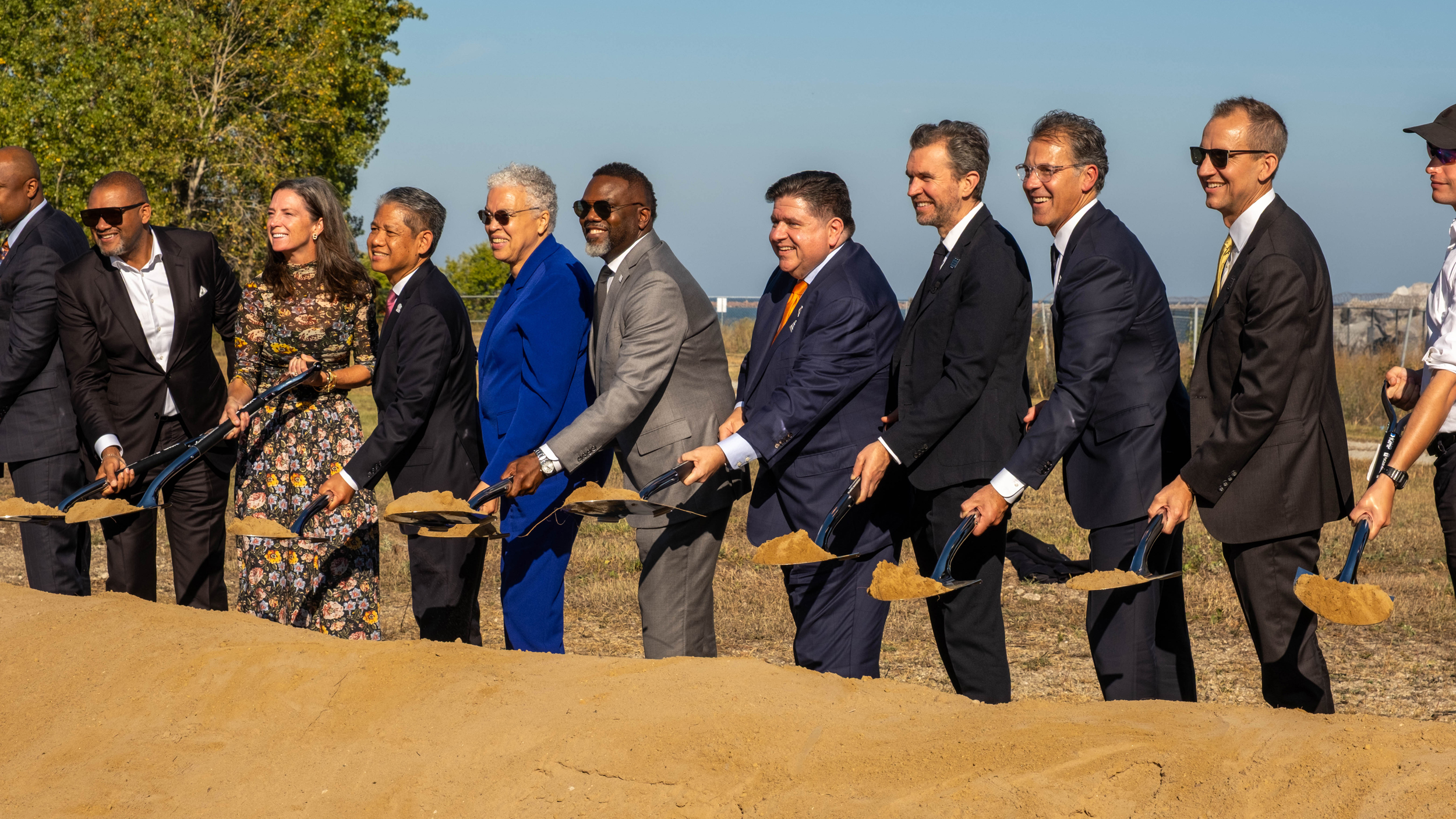
Priscilla Horton, principal of Bowen High School in South Chicago—which received $10,000 from PsiQuantum for science education equipment—said the company’s support is an investment in the next generation of scientists and engineers.
“We want to make sure that we’re saying to our young people that they belong in all of these spaces,” Horton said. “Not years from now, but at its inception.”
Members of the Coalition for a South Works CBA say they hope for positive outcomes from the project as well, but after decades of broken promises and disinvestment in their community, they want a binding commitment.
“This is about our lives, our health, the well-being of our children and our community,” Holcomb said. “We are excited that we can move forward on our CBA, and we are in this fight until they build it right.”
This story was updated Oct. 1, 2025, with a statement from Related Midwest, and Oct. 2, 2025, with a statement from Illinois Quantum and Microelectronics Park.
About This Story
Perhaps you noticed: This story, like all the news we publish, is free to read. That’s because Inside Climate News is a 501c3 nonprofit organization. We do not charge a subscription fee, lock our news behind a paywall, or clutter our website with ads. We make our news on climate and the environment freely available to you and anyone who wants it.
That’s not all. We also share our news for free with scores of other media organizations around the country. Many of them can’t afford to do environmental journalism of their own. We’ve built bureaus from coast to coast to report local stories, collaborate with local newsrooms and co-publish articles so that this vital work is shared as widely as possible.
Two of us launched ICN in 2007. Six years later we earned a Pulitzer Prize for National Reporting, and now we run the oldest and largest dedicated climate newsroom in the nation. We tell the story in all its complexity. We hold polluters accountable. We expose environmental injustice. We debunk misinformation. We scrutinize solutions and inspire action.
Donations from readers like you fund every aspect of what we do. If you don’t already, will you support our ongoing work, our reporting on the biggest crisis facing our planet, and help us reach even more readers in more places?
Please take a moment to make a tax-deductible donation. Every one of them makes a difference.
Thank you,


